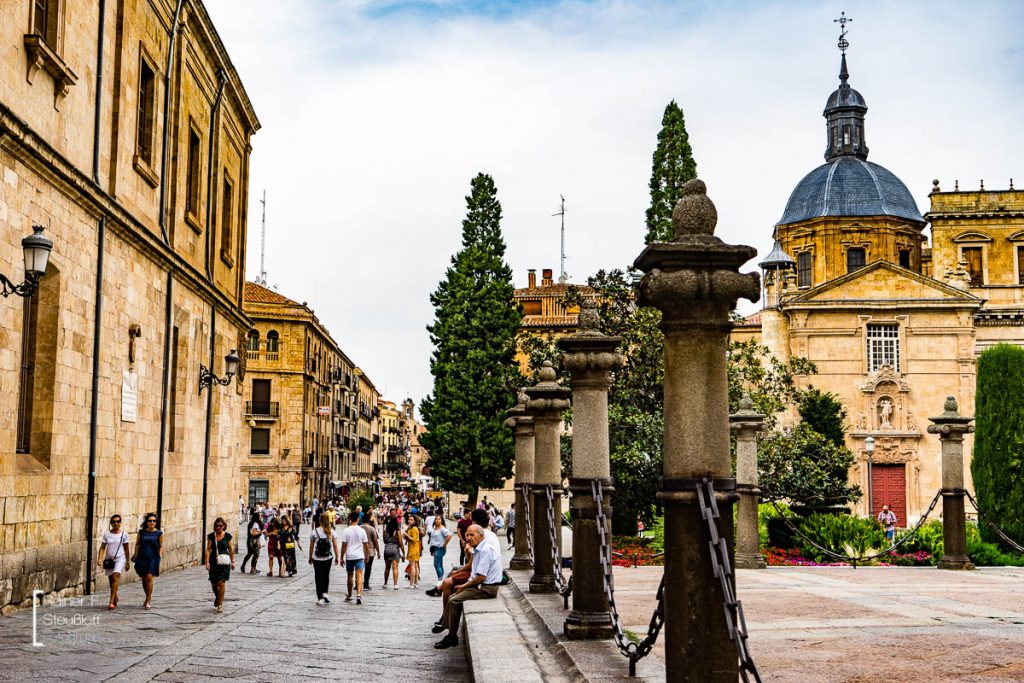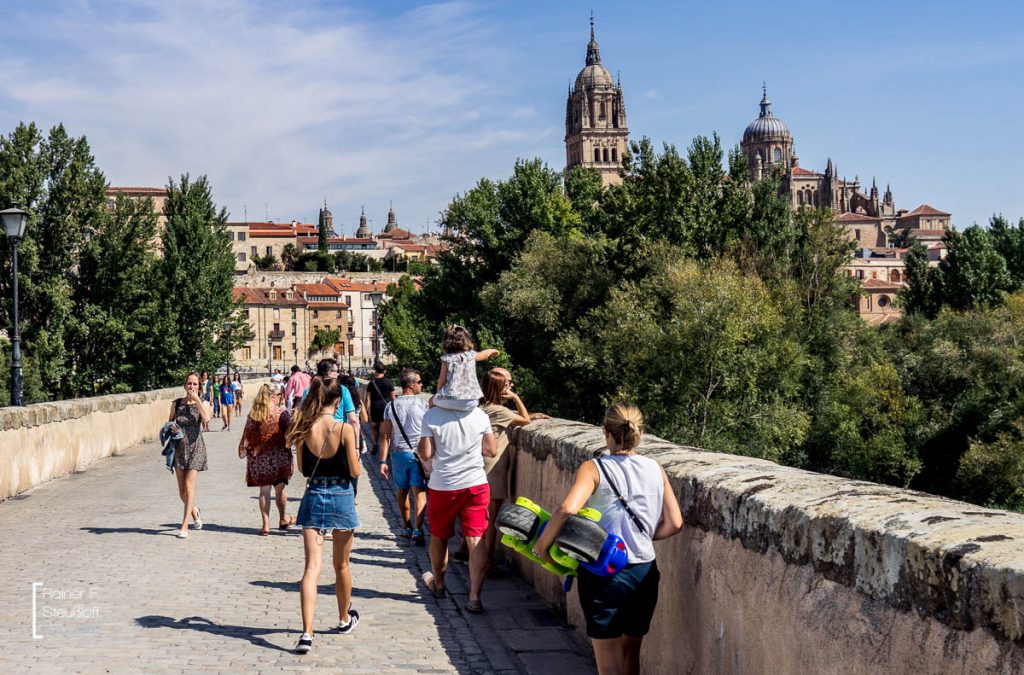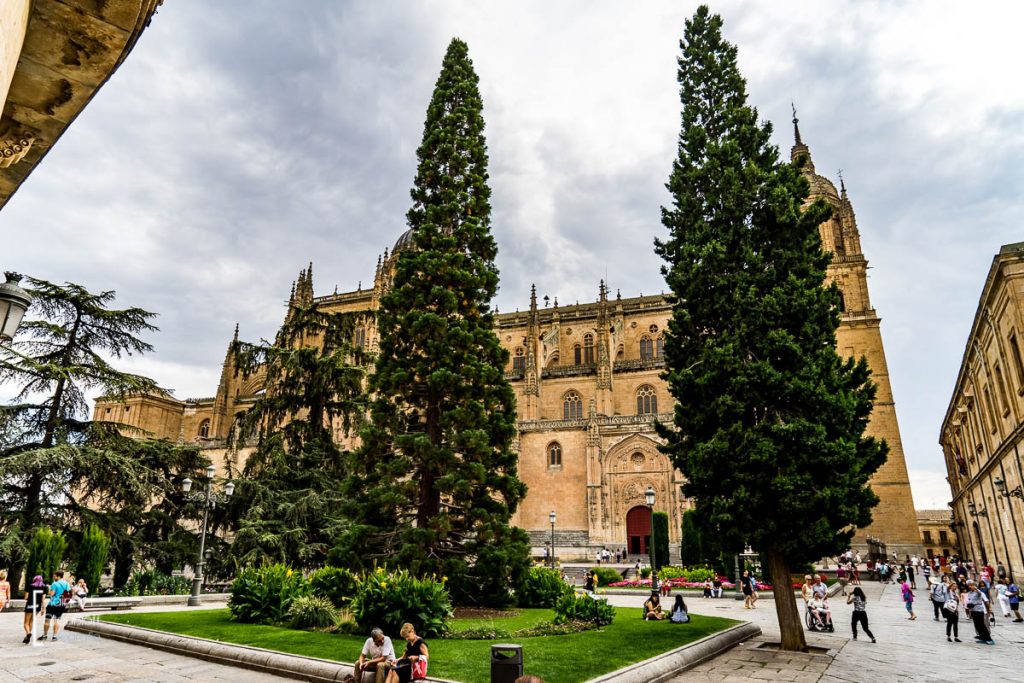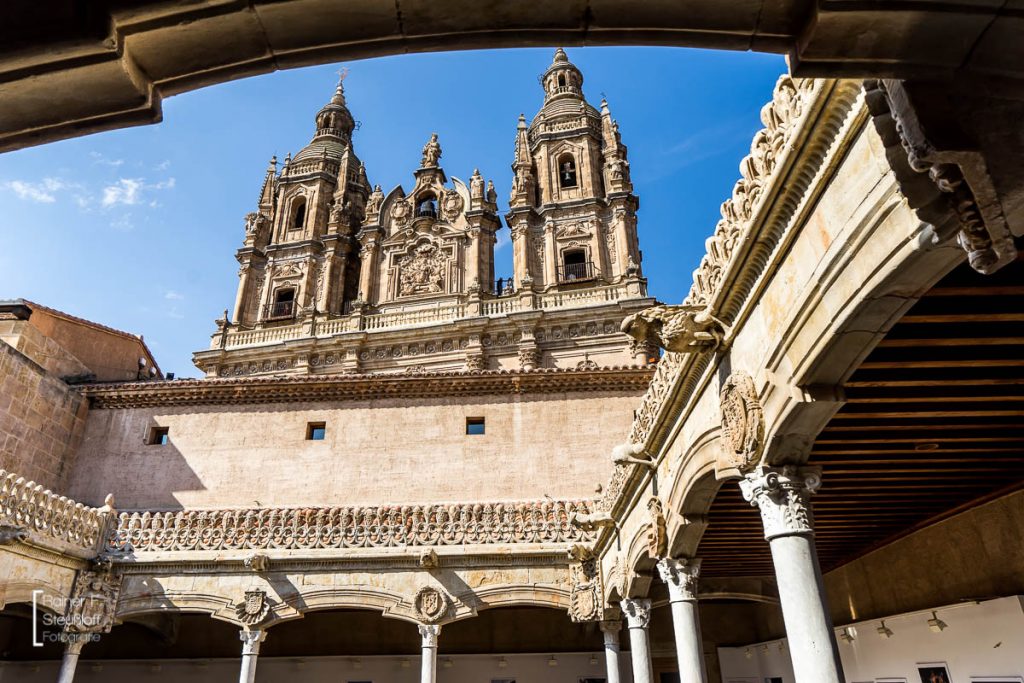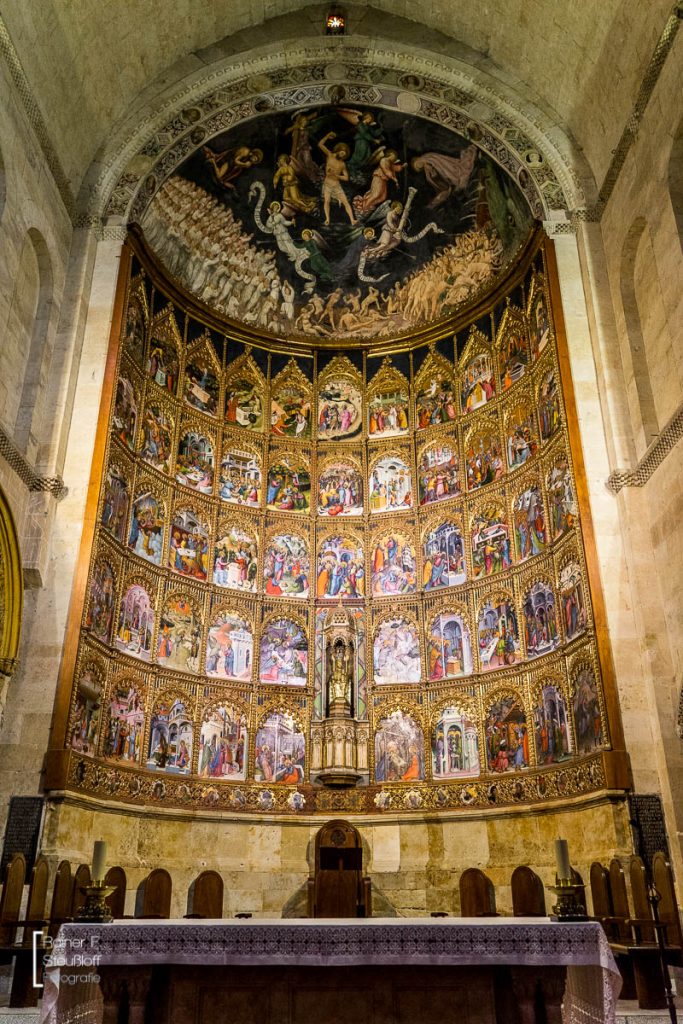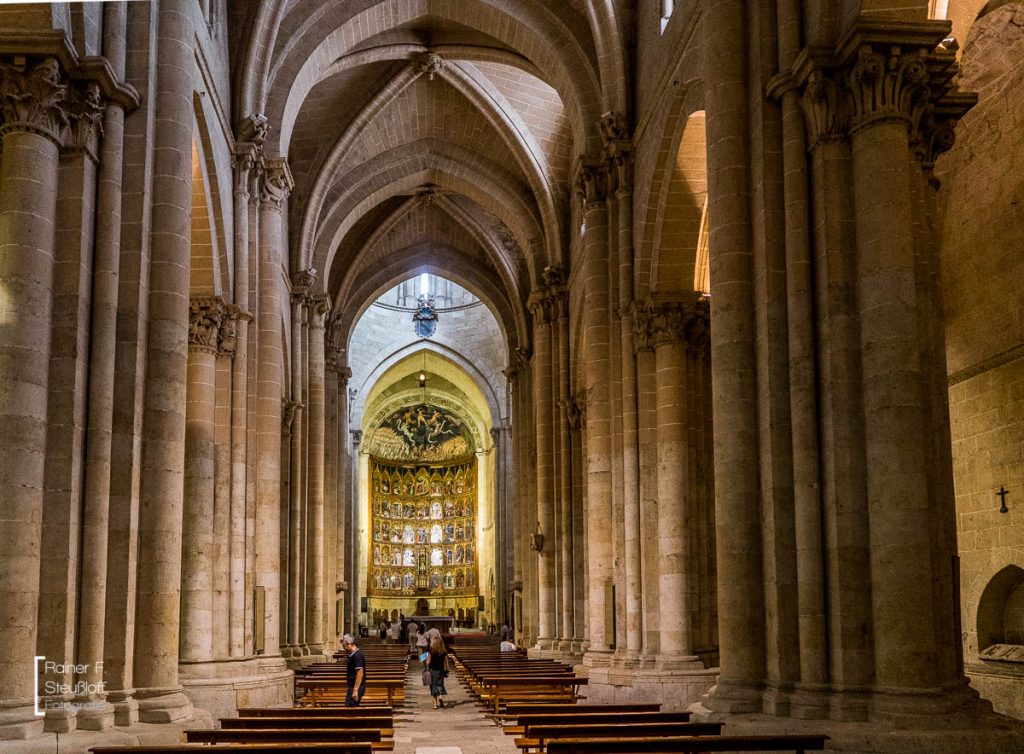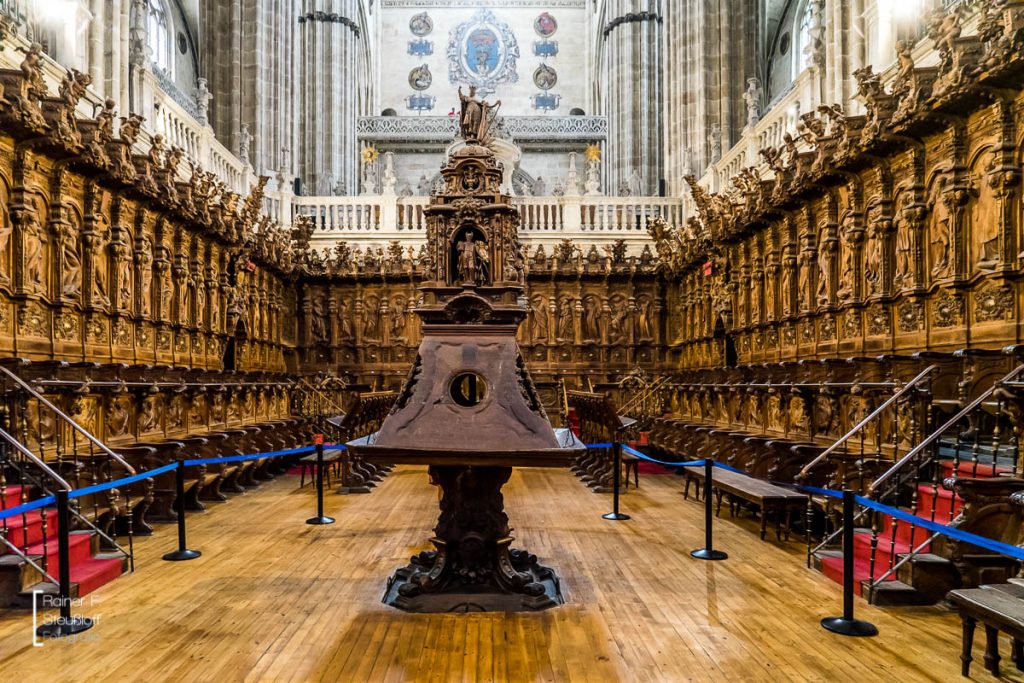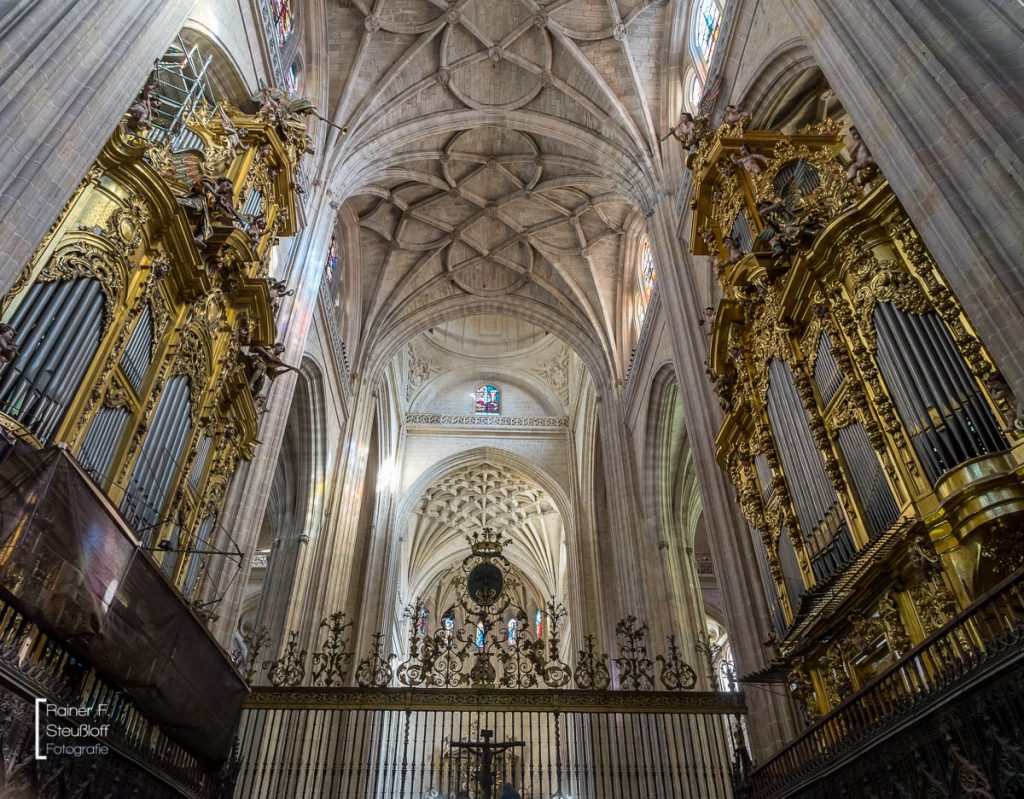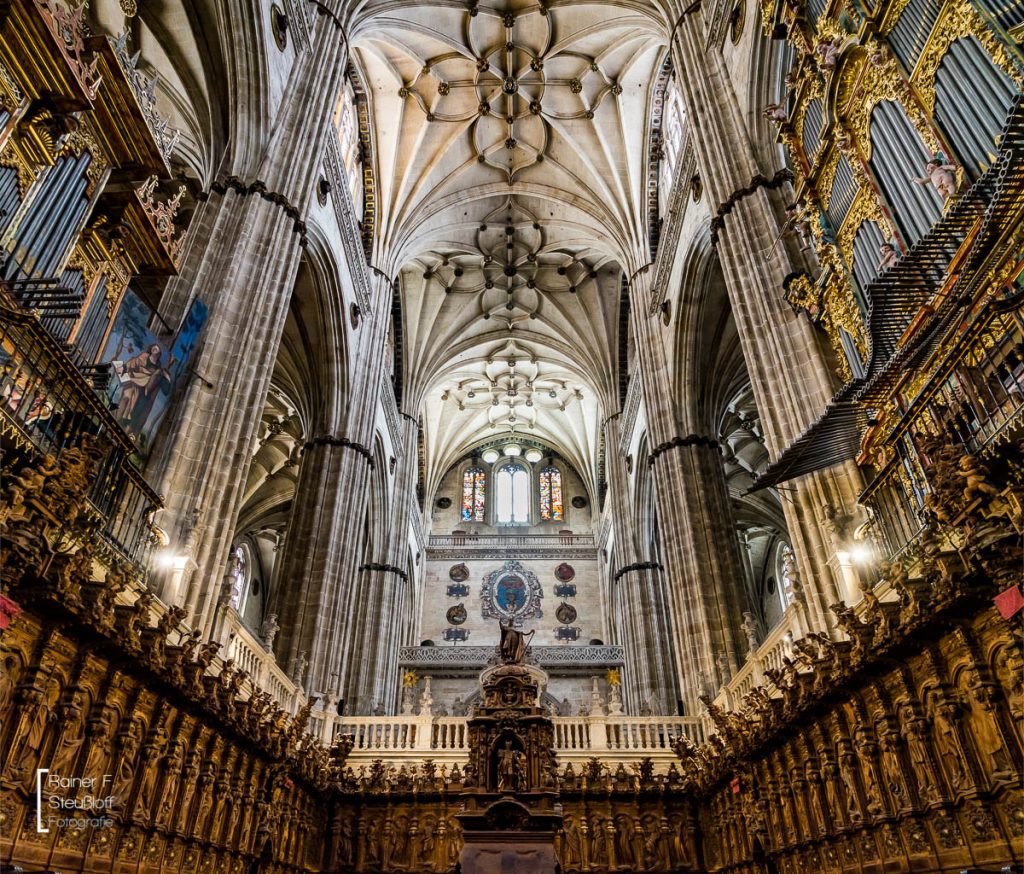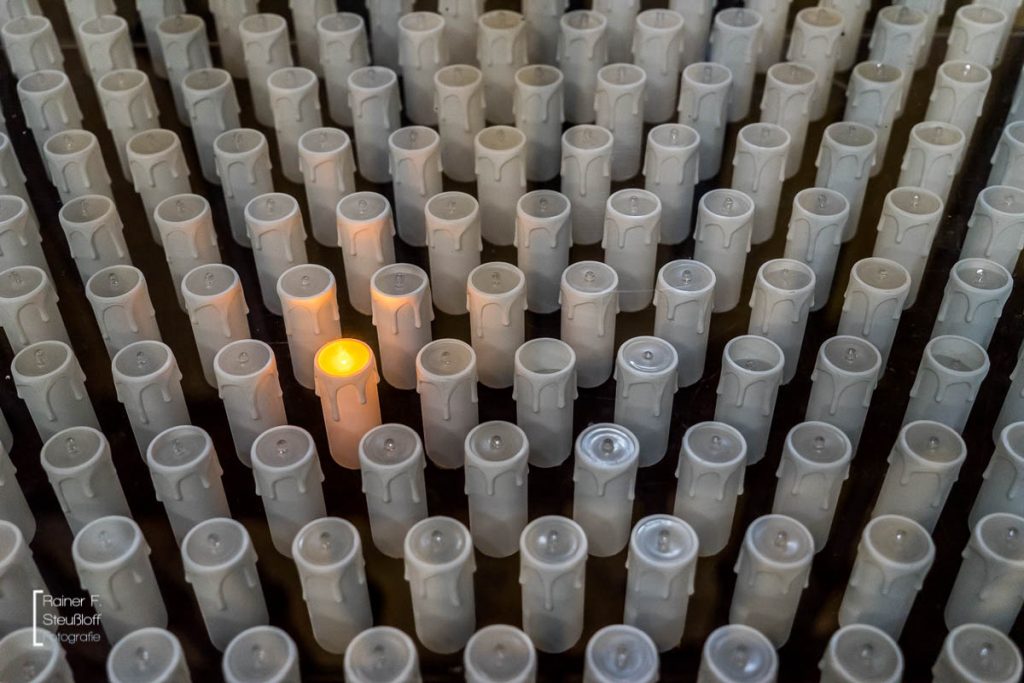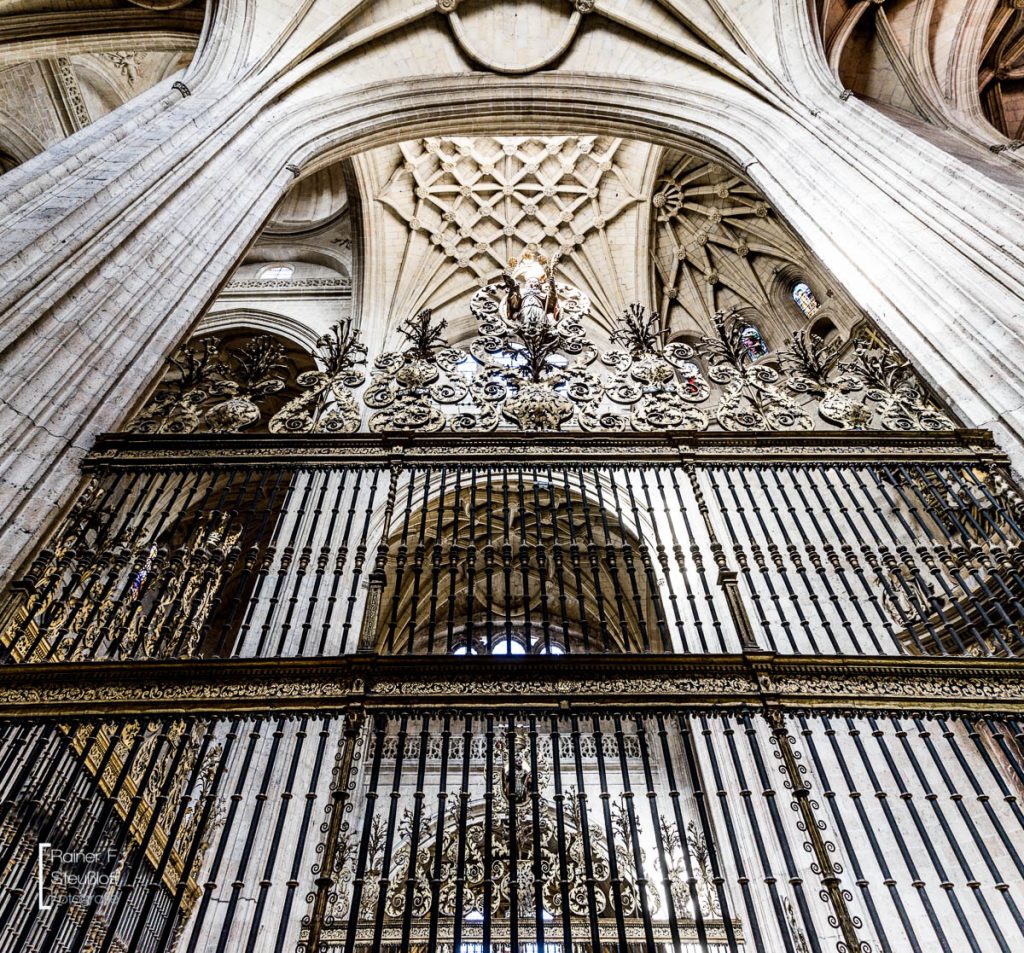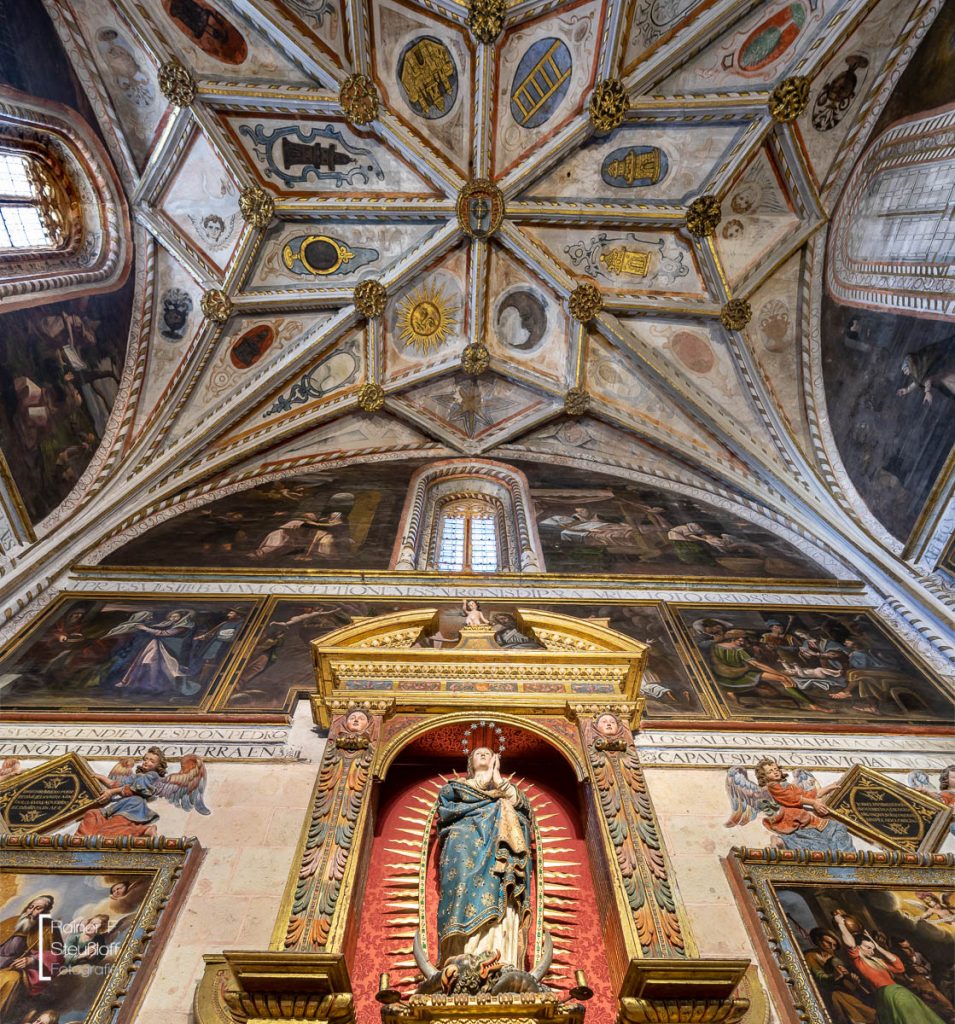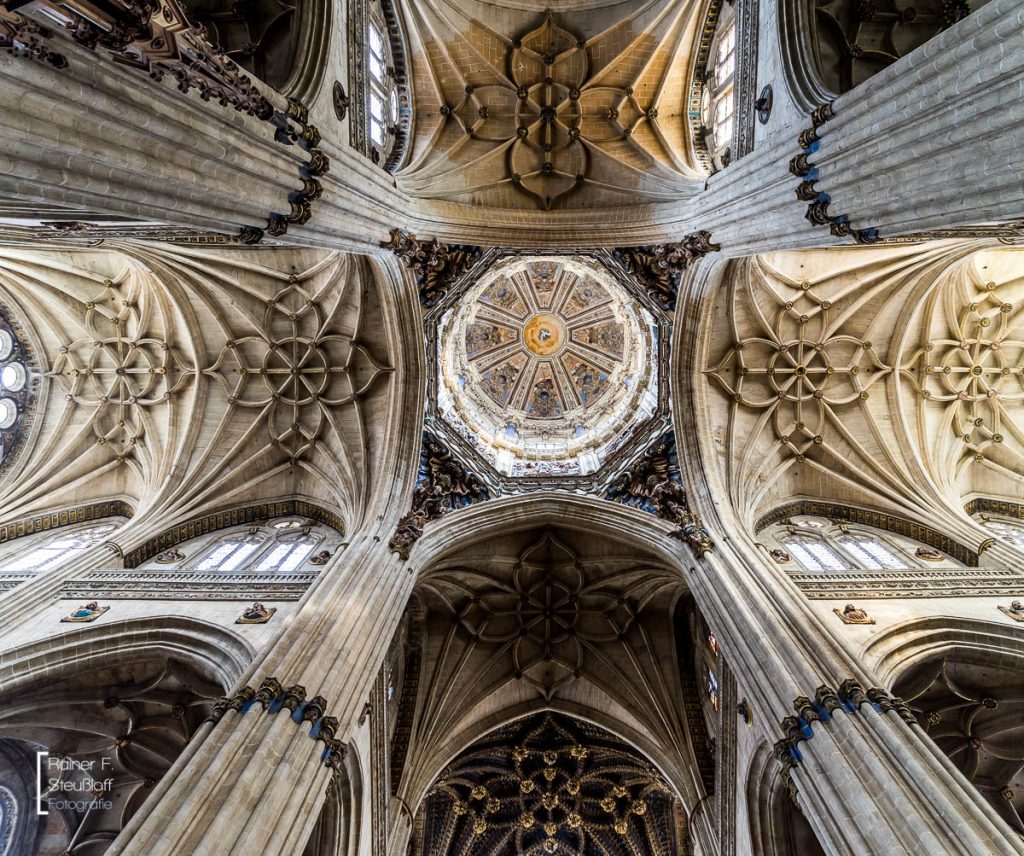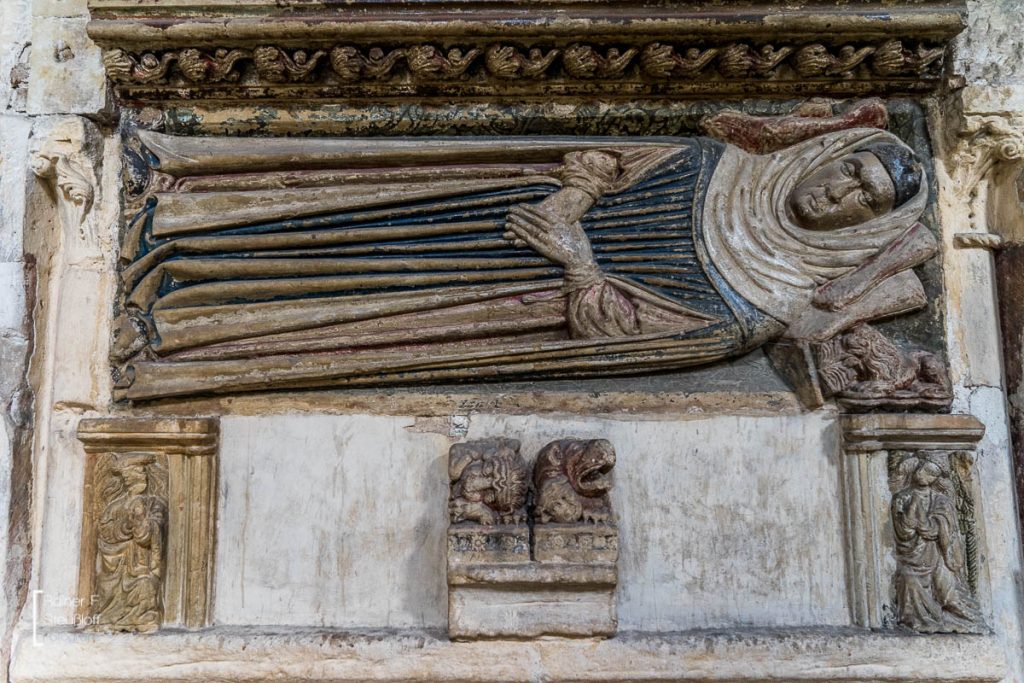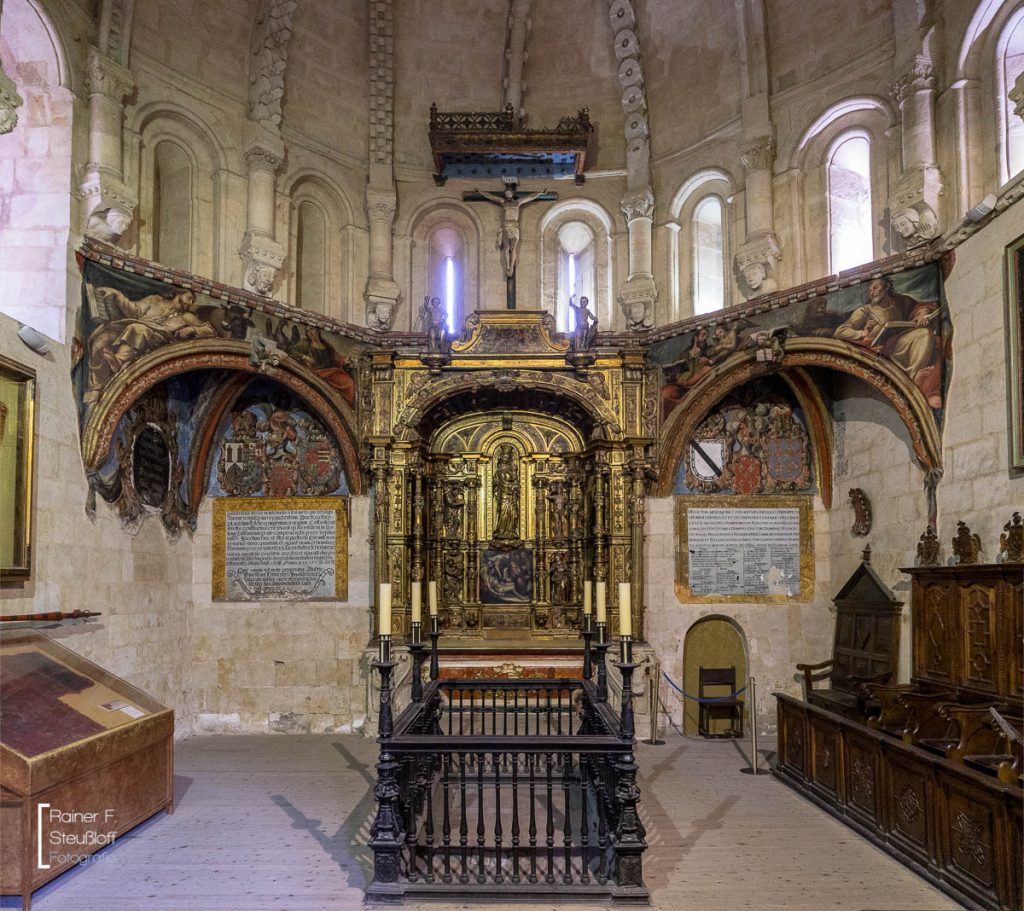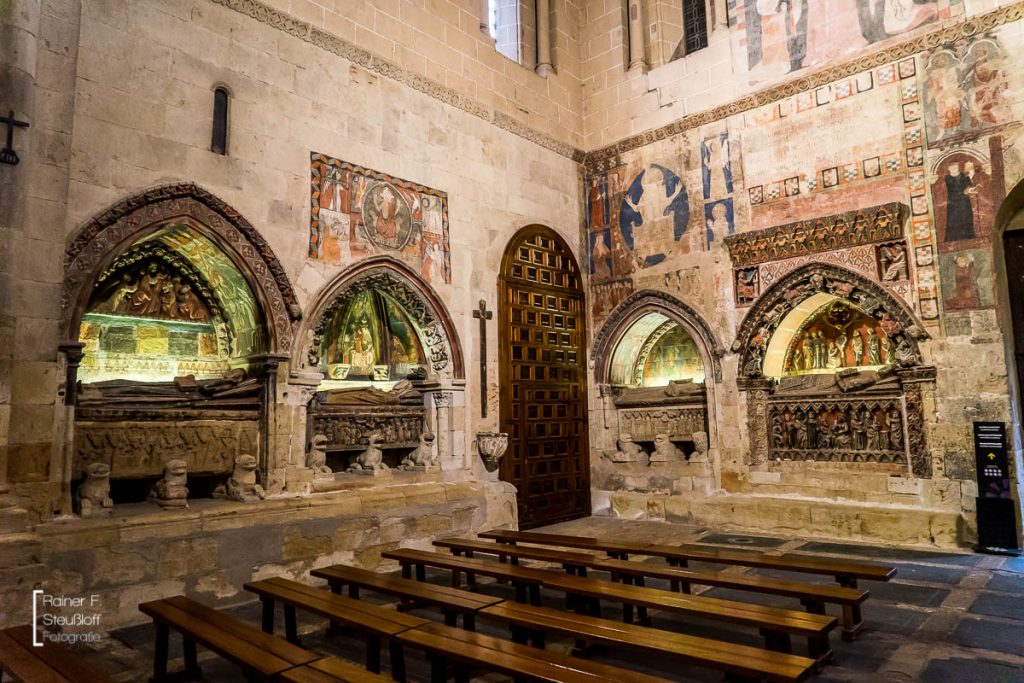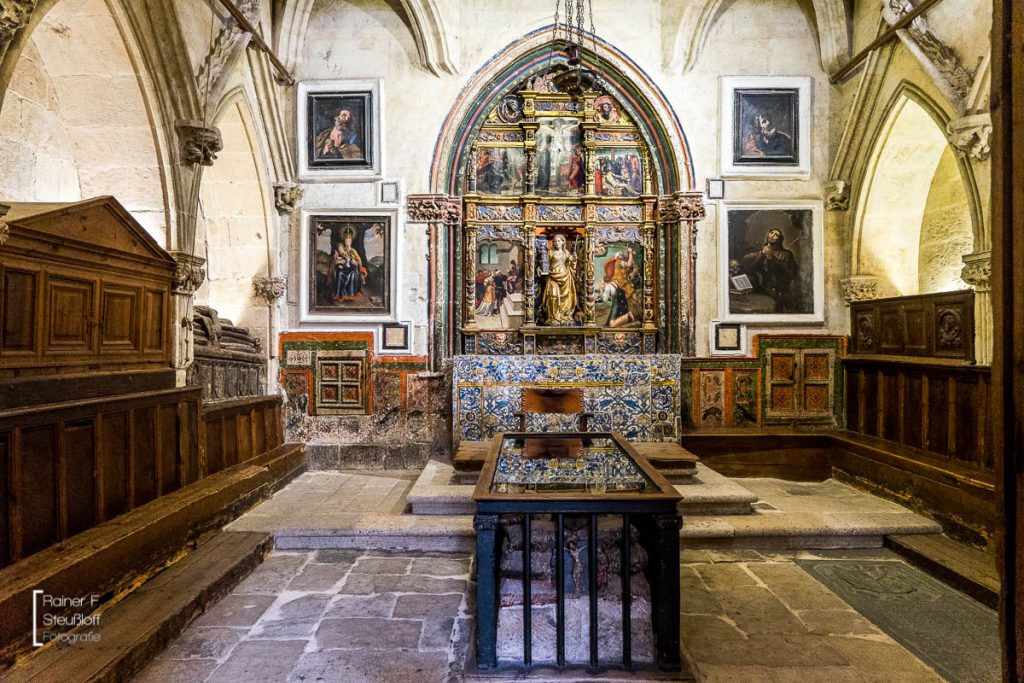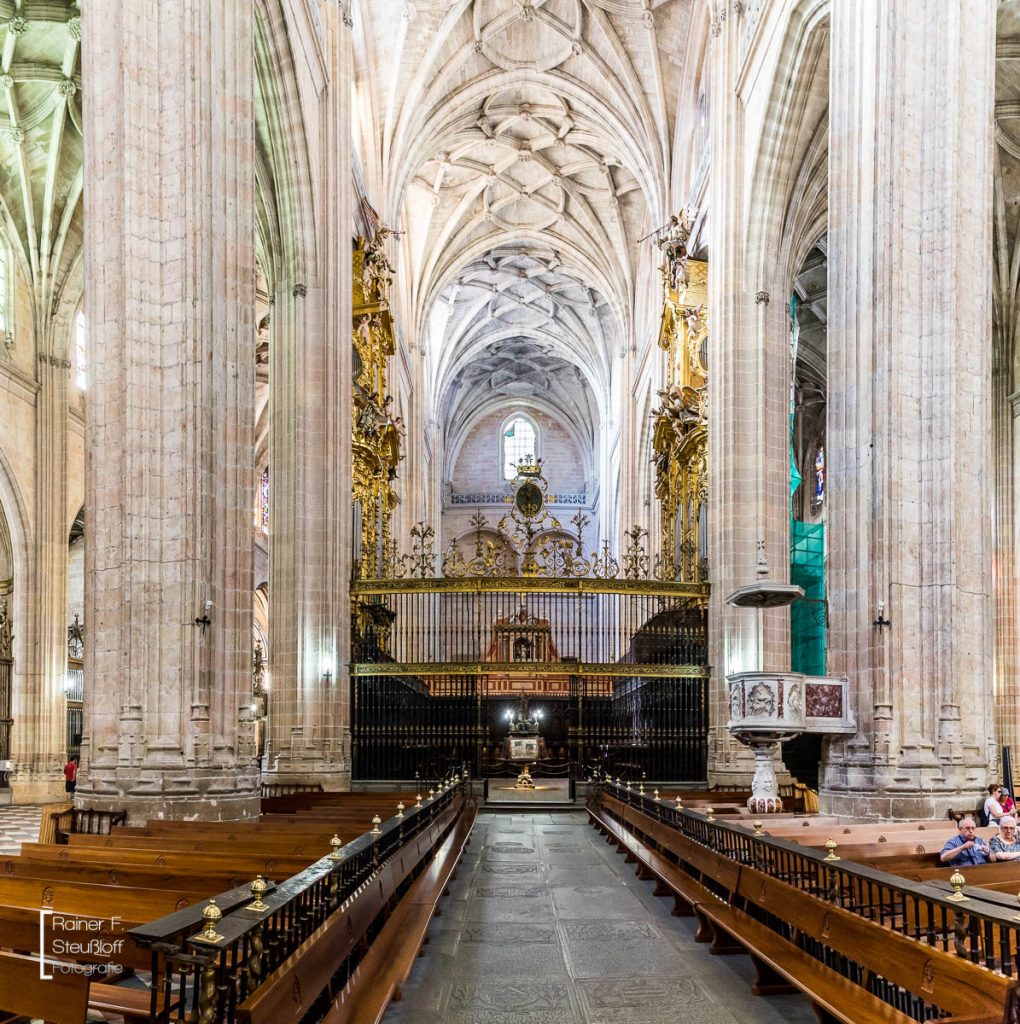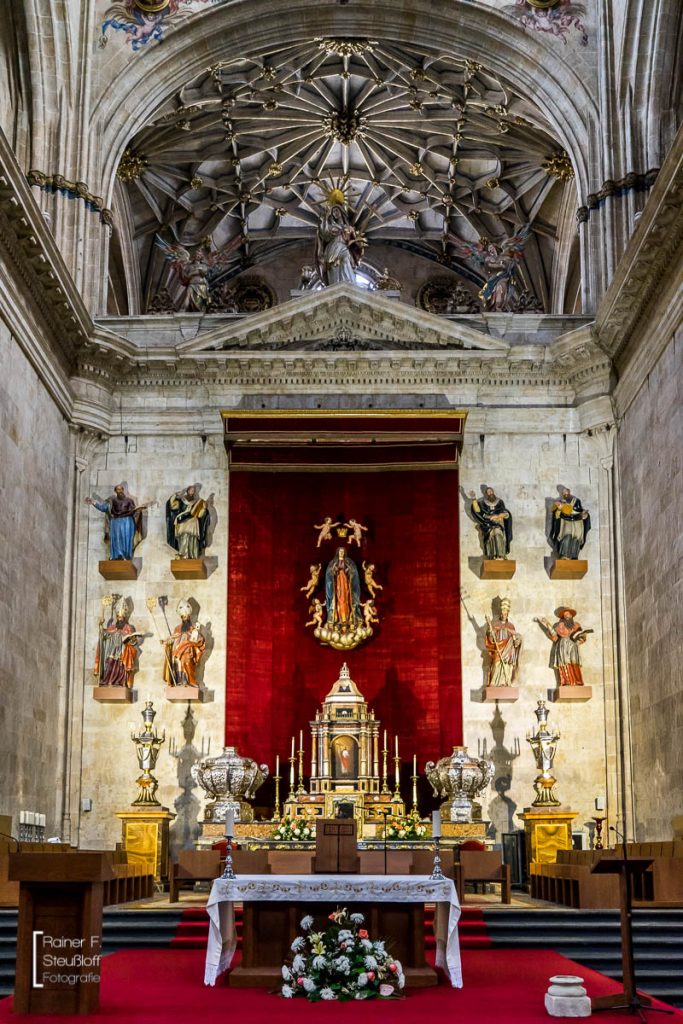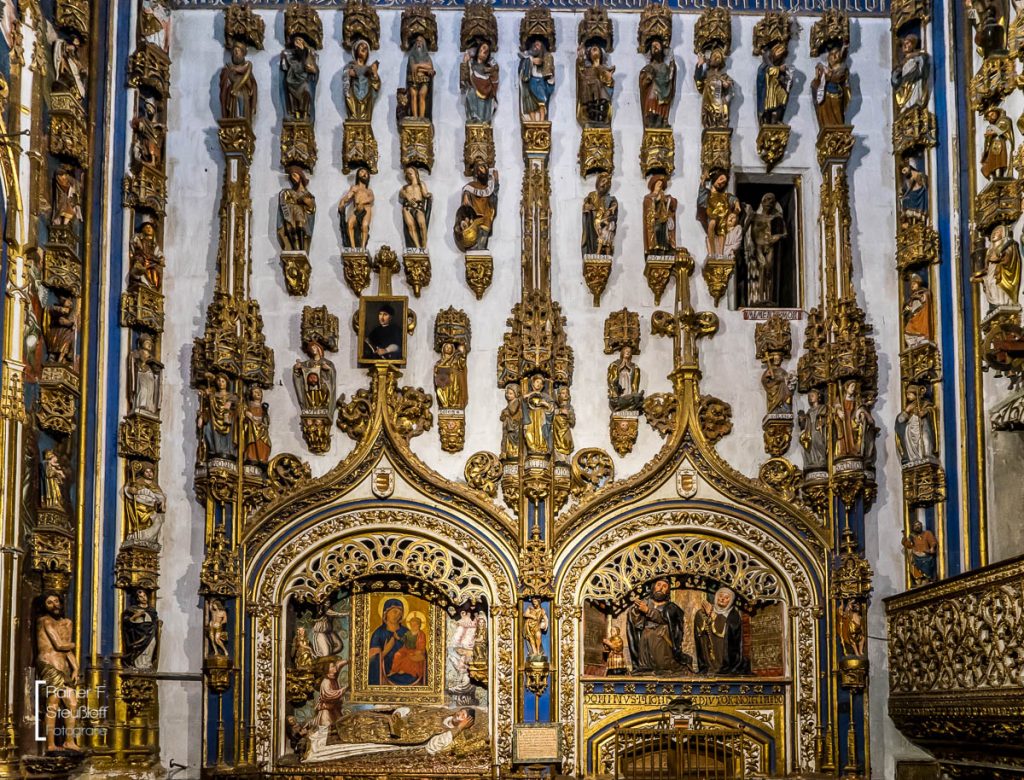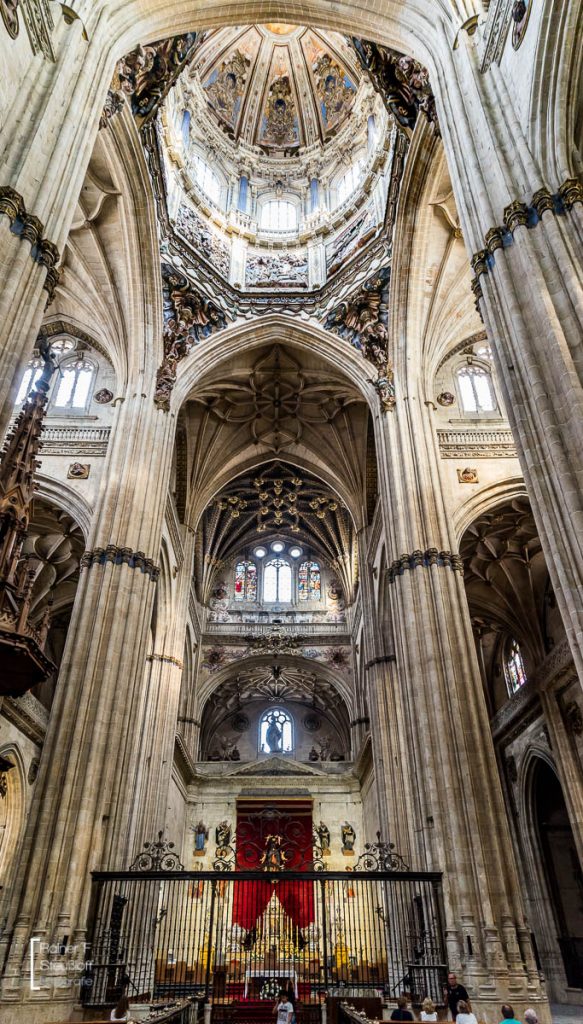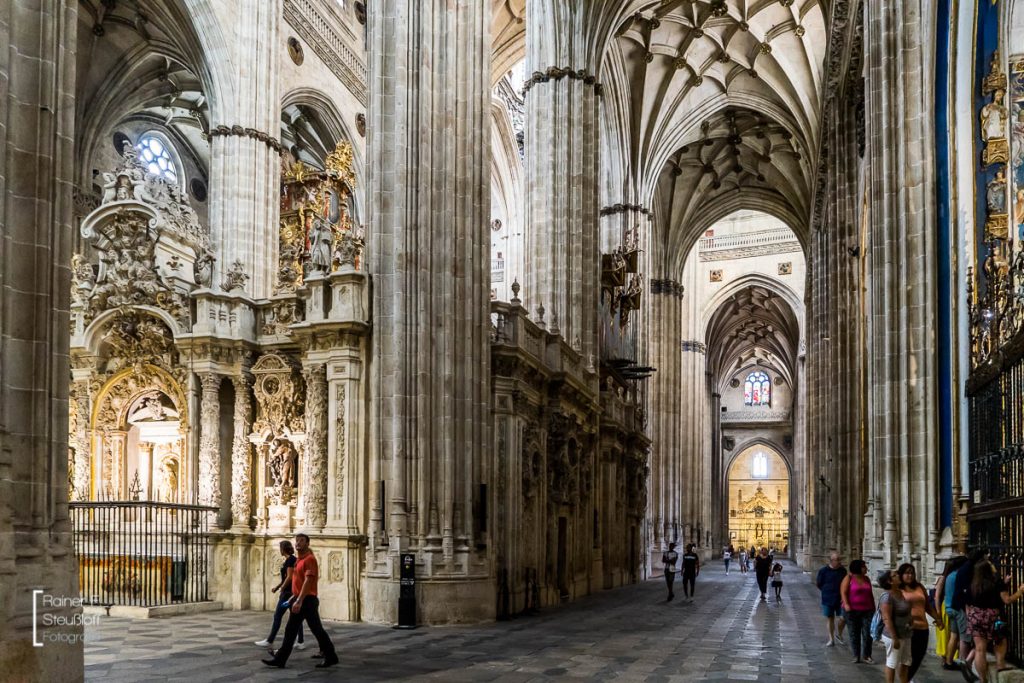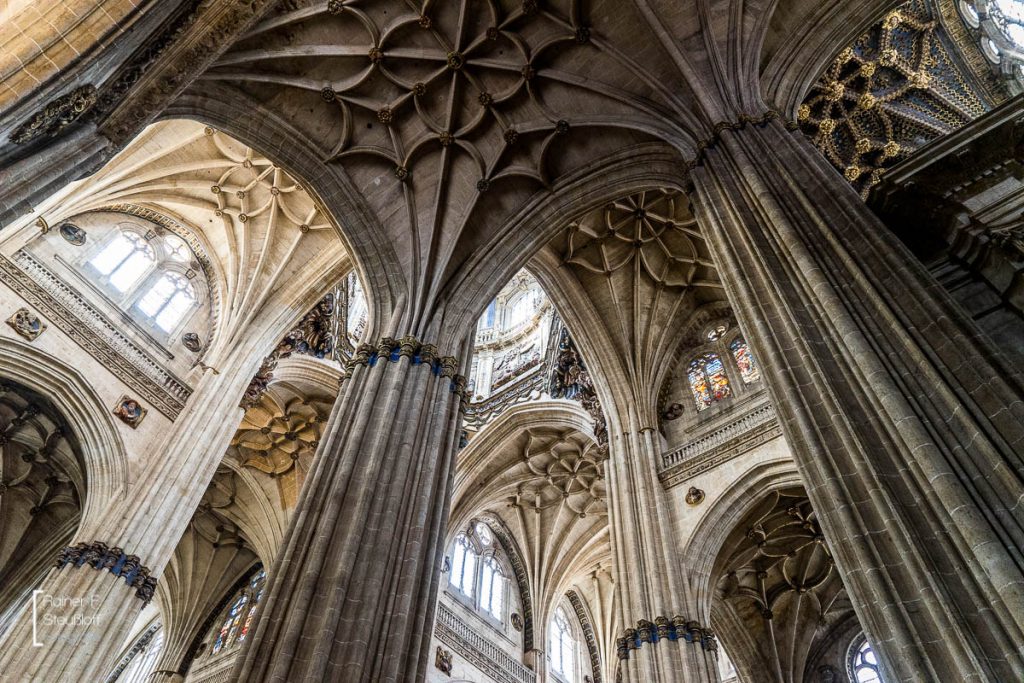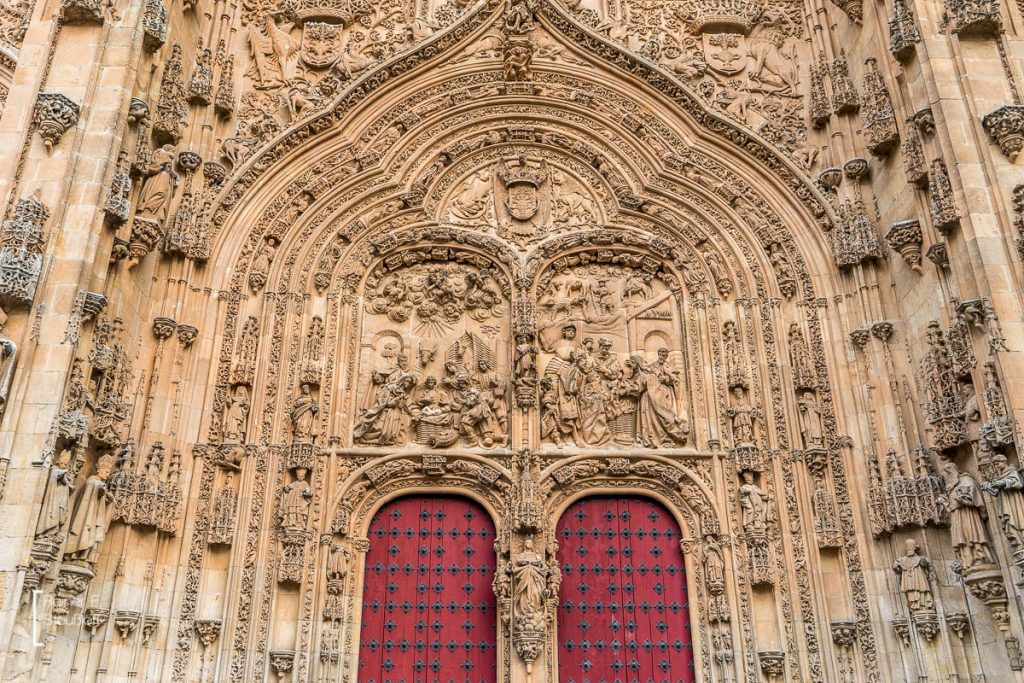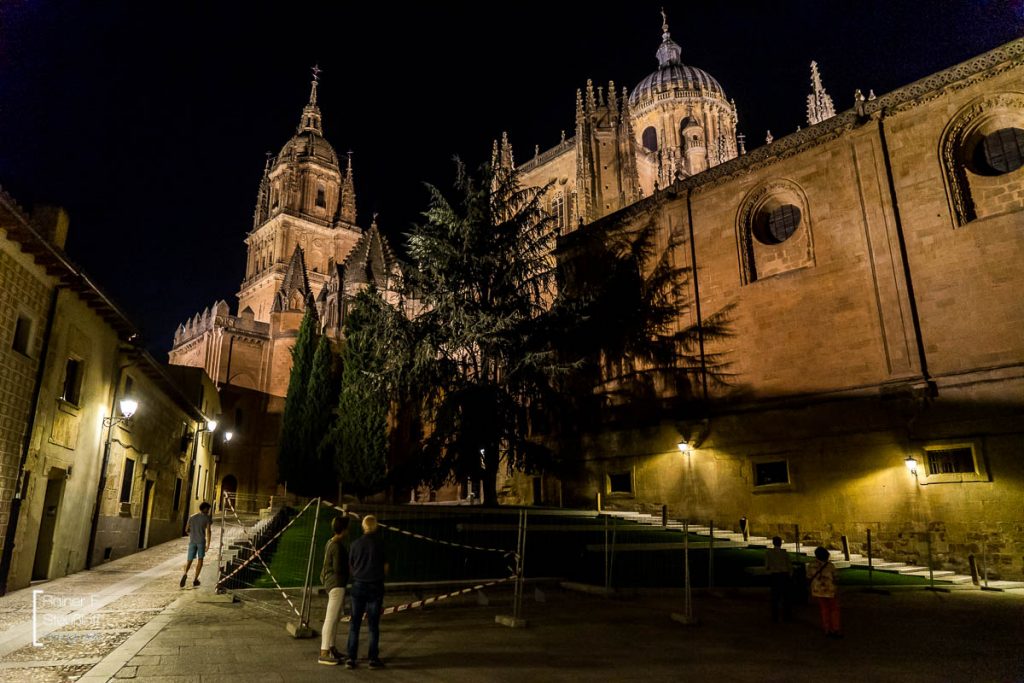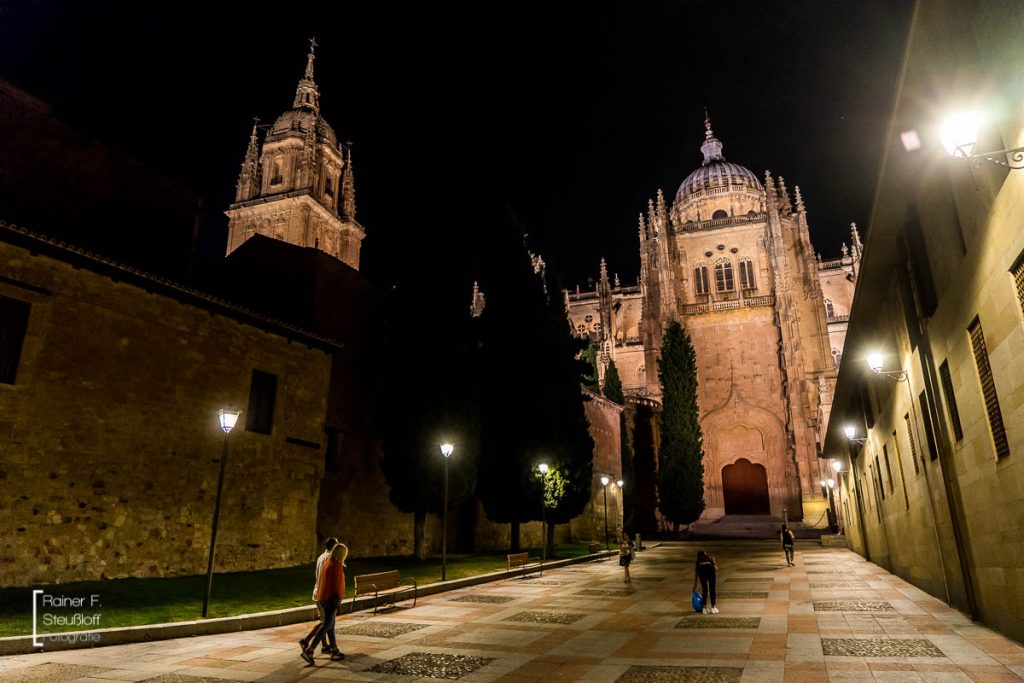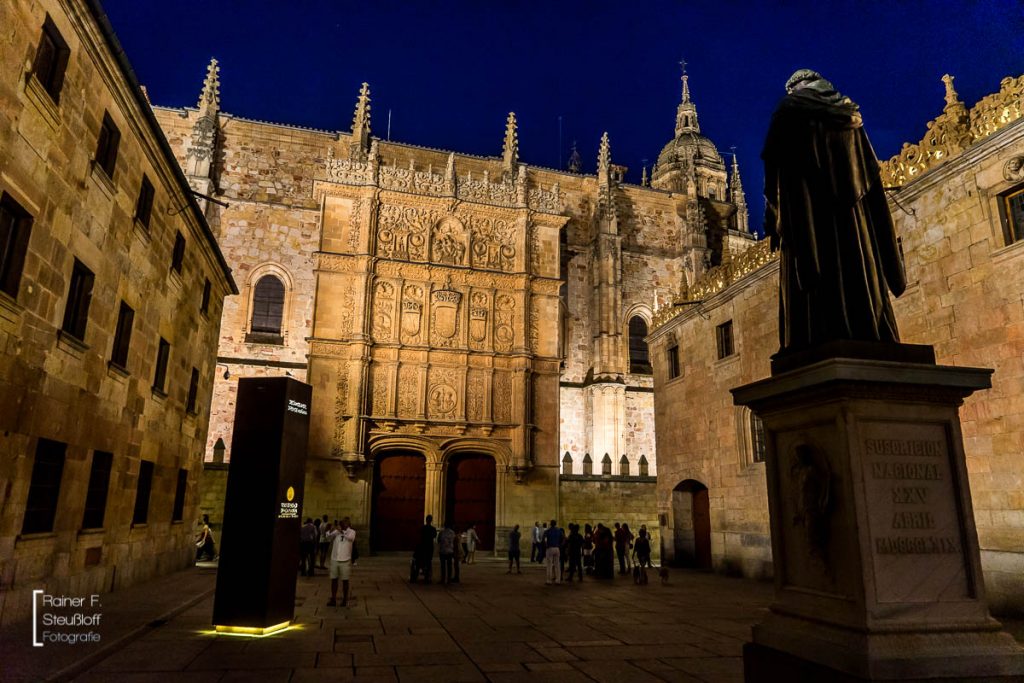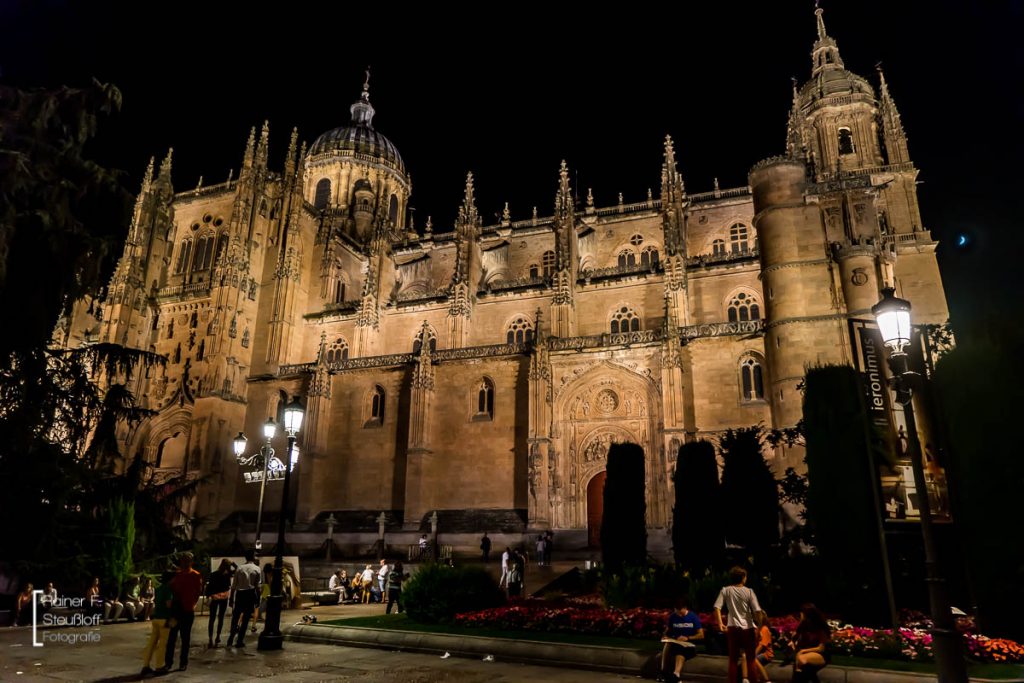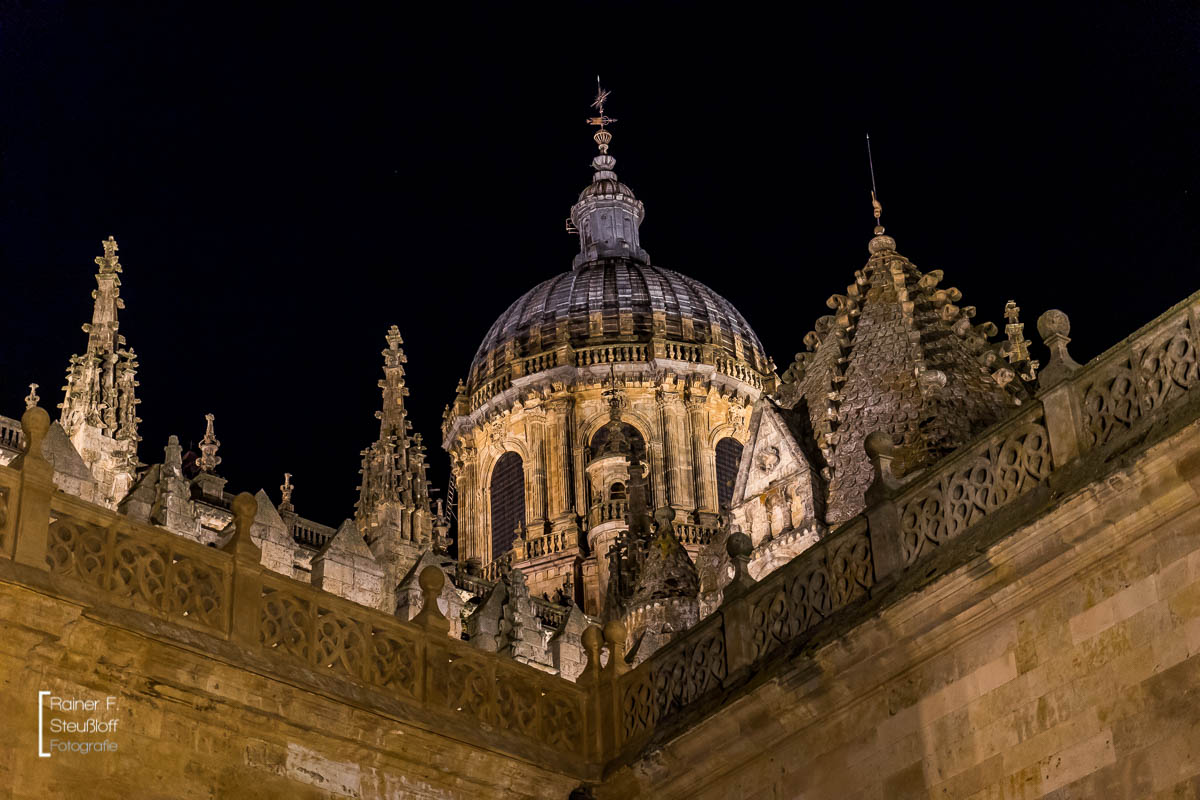Spaniens Kathedralen: Salamanca
In anderen Städten wurden neue gerne auf alte Kirchen gebaut und heute suchen Archäologen in den Grundmauern nach den Spuren vorheriger Bauwerke. In Salamanca ersparte man sich die Mühe und baute einfach die neue Kathedrale doppelt so groß neben die alte, machte einen Durchgang und hatte zwei. Die Catedral Vieja de Santa María del Asedio aus dem 12. Jahrhundert und die Catedral Nueva de Santa María del Asedio aus dem 16. Jahrhundert stehen untrennbar zusammen. Vorgängerbauten konnten nicht gefunden werden.
Das Erdbeben von Lissabon im Jahre 1755 hat in beiden Gebäuden erhebliche Spuren hinterlassen. Viele Mauern und Türme mussten verstärkt werden.
Reichhaltige Verzierungen, Figuren, Geschichten zeigen innen und außen die Geschichten den Bibel und in den Weiten der Deckengewölbe der neuen Kathedrale kann man sich leicht verlieren. Zahlreiche schmiedeeiserne Gitter trennen die Bereiche des Klerus vom Innenraum und lassen die Geistlichen so unbehelligt vom Volk agieren. Wie in vielen Kirchen Spaniens erzeugt die Ausstattung auch hier den Eindruck, dass die Kirchenoberen wenig mit den Gläubigen zu tun haben wollten.
Auch die neuere Geschichte ist überall spürbar. Im gegenüberliegenden Bischofspalast war zeitweise das Hauptquartier Francos untergebracht. Heute Museum für sakrale Kunst, Archiv und Tagungshaus.
In other cities, new churches were often built on top of old ones and today archaeologists search the foundation walls for traces of previous buildings. In Salamanca, they saved themselves the trouble and simply built the new cathedral twice as big next to the old one, made a passageway and had two. The Catedral Vieja de Santa María del Asedio from the 12th century and the Catedral Nueva de Santa María del Asedio from the 16th century are inseparable. Predecessor buildings could not be found.
The Lisbon earthquake of 1755 left considerable traces in both buildings. Many walls and towers had to be reinforced.
Rich decorations, figures and stories inside and out tell the stories of the Bible and it is easy to get lost in the expanses of the vaulted ceilings of the new cathedral. Numerous wrought-iron grilles separate the clergy areas from the interior, allowing the clergy to operate undisturbed by the people. As in many churches in Spain, the décor here gives the impression that the church superiors wanted little to do with the faithful.
Recent history is also evident everywhere. Franco’s headquarters were temporarily housed in the bishop’s palace opposite. Today it is a museum of sacred art, archive and conference centre.
